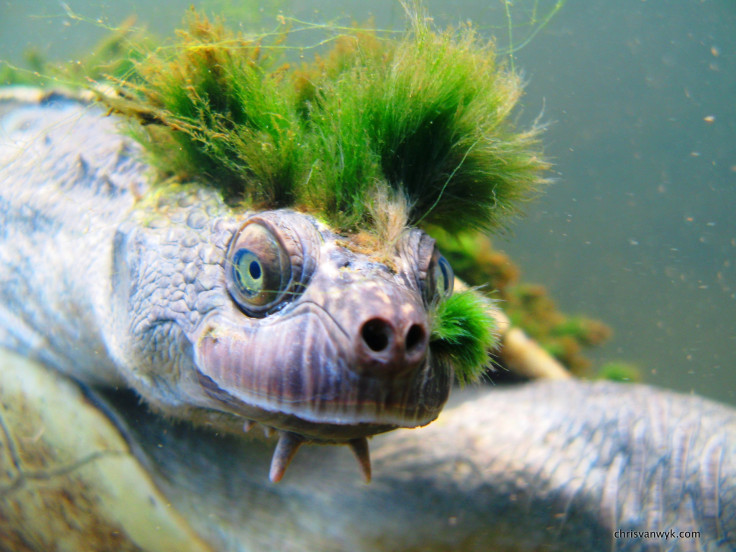Mary River Turtle: Rare ‘Butt-Breathing’ Reptile Joins Endangered Species List

Mary River (Elusor macrurus), a bizarre turtle that breathes with its genitals and boasts a crazy punk-like hairdo on occasions, is on the verge of going extinct.
Endemic to Australia’s Mary River, the short-necked reptile has been witnessing a significant decline in numbers and is now ranked 29th on Zoological Society of London’s “EDGE of Existence" list of most vulnerable reptile species.
The EDGE of Existence program highlights and protects some of the most unique and wonderful species on the planet and has already added creatures like a blind snake, limbless lizard, and world’s largest sea turtle to its list. But, none of these reptiles behave like Mary River.
The 40 cm-long water turtle boasts of wide nostrils, finger-like structures under its chin and literally breathes through its backside, making up something you have never seen or heard of.
Essentially, this is the work of gill-like glands near the creature’s rear-end. The organs process oxygen from surrounding water, allowing it to live underwater for up to three days, without coming up for air, the Guardian reported.
Among other things, some of these turtles even have incredibly long tails, which grows up to 70 percent longer than their shells at times, while a few others have a weird green hairdo. This looks pretty fascinating but is actually the work of algae.
"The Mary River Turtle spends so much time submerged underwater that some individuals become covered in algae—and can end up with some pretty impressive bright green hairstyles!" Rikki Gumbs of the Imperial College London, who helped compile the EDGE reptile list, told AFP.
All this might sound interesting, but it’s worth noting these unique looks and bizarre features are also the cause of Mary River turtle’s downfall.
Nearly half a century ago, people fascinated by the weird turtle started keeping it as a pet. This led to a hunting spree, with pet collectors sending thousands of Mary River hatchlings to different parts of the country every year.
This, combined with the creature’s slow pace to reach sexual maturity and natural habitat destruction, triggered a massive decline in their numbers. Mary River turtles don’t breed until they are 25.
"Reptiles often receive the short end of the stick in conservation terms, compared with the likes of birds and mammals," Gumbs told the Guardian. "Just as with tigers, rhinos, and elephants, it is vital we do our utmost to save these unique and too-often overlooked animals.”
“Many Edge reptiles are the sole survivors of ancient lineages, whose branches of the tree of life stretch back to the age of the dinosaurs. If we lose these species there will be nothing like them left on Earth.”
© Copyright IBTimes 2025. All rights reserved.





















